Research
The Geotechnical Laboratory is engaged in research to protect geo-infrastructure and geo-environment from natural disaster and environmental pollution. Specifically, the keywords are ground improvement, foundation structure, barrier structure of waste landfill site, containment structure of ground and groundwater pollution, and recycling society. The Geotechnical Laboratory are developing geotechnical research activities effectively linking related issues on the upstream and downstream sides and further further collaborating with other countries.


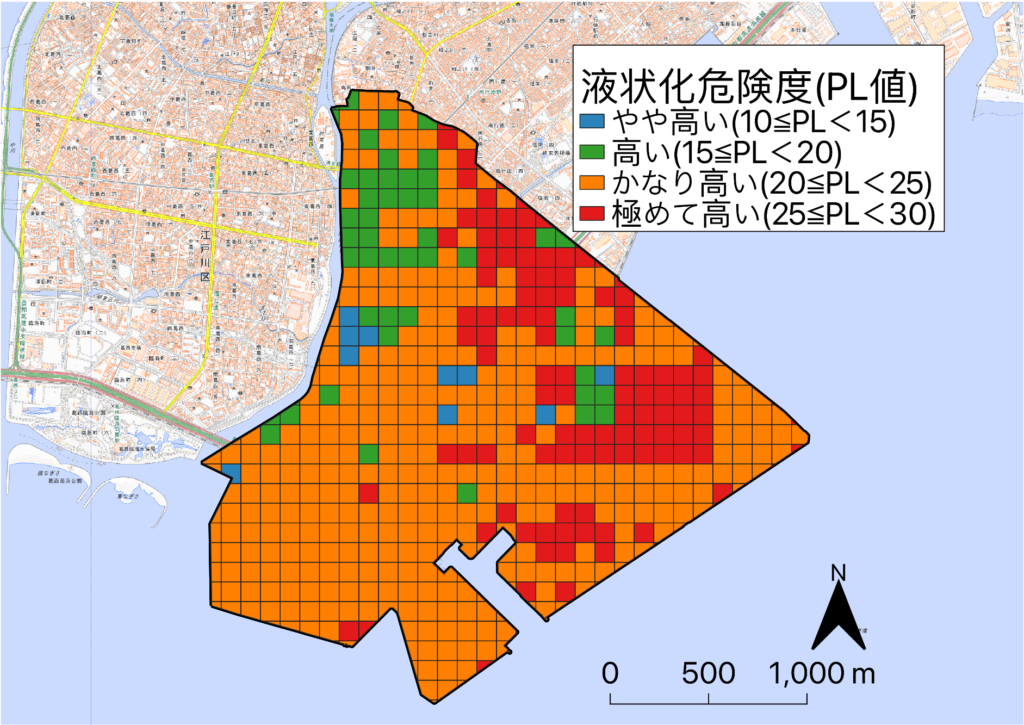
[Natural Hazards; Liquefaction; AI; Risk Mapping; Disaster Prevention and Mitigation]
Liquefaction Risk Assessment and Accurate Liquefaction Hazard Mapping Using AI and GID
This study focuses on liquefaction risk assessment and hazard mapping using artificial intelligence (AI) technology and geotechnical information databases (GIDs). To date, AI has been used to predict unknown geotechnical information based on existing geotechnical information databases with the aim of accurately assessing liquefaction risk in Yokohama and Urayasu cities. Based on the predicted soil information, the PL method is applied to calculate the liquefaction risk, which is then used to produce detailed hazard maps. This approach has resulted in a more accurate risk assessment compared to existing hazard maps. As a result, it contributes to a more accurate prediction of potential liquefaction damage in the event of an earthquake and provides the basic information for appropriate countermeasures. This is an important example of the potential application of AI in geohazard risk management.

[Natural Hazards; Landslides; AI; Risk Mapping; Disaster Prevention and Mitigation]
AI – GID – GIS Integration for Landslide Risk Assessment and Comprehensive Geotechnical Hazard Mapping
This study develops a new method to significantly improve the accuracy of ground and sediment hazard prediction by integrating the use of artificial intelligence (AI), ground information databases (GID), and geographic information systems (GIS). Using the Noto Peninsula Earthquake of 2024 as a case study, the proposed technique will be investigated for its potential contribution to risk management and countermeasure planning in the event of ground and landslide disasters. Furthermore, in the context of extreme weather events, which are increasing due to climate change, the importance of advance prediction and mitigation measures for landslides and landslide hazards is increasing. This research aims to provide results that will be a new milestone in the orientation of future natural disaster response measures.
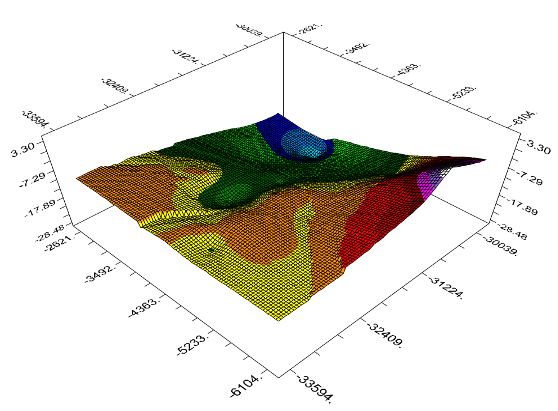
[Natural Hazards; Subsidence and Subsidence; Ai; Depth of Bearing Layer; Disaster Prevention and Mitigation]
Development of A High-Precision Soil Data Spatial Distribution Prediction Model Using An Ensemble Method and Its Application to Geotechnical Engineering
As a novel approach to address subsidence and settlement problems, this study focuses on the development of machine learning models using ensemble learning methods and proposes a highly accurate method for predicting the spatial distribution of ground data from ground survey databases. The conventional empirical-based prediction of soil properties based on limited survey data is improved by a scientific and quantitative method to increase the accuracy and efficiency of soil investigation. The study achieves highly accurate predictions of the depth of the bearing layer using 3,360 ground survey data in the Kanto region. This is expected to contribute to the formulation of risk management and preventive measures in civil and geotechnical engineering.
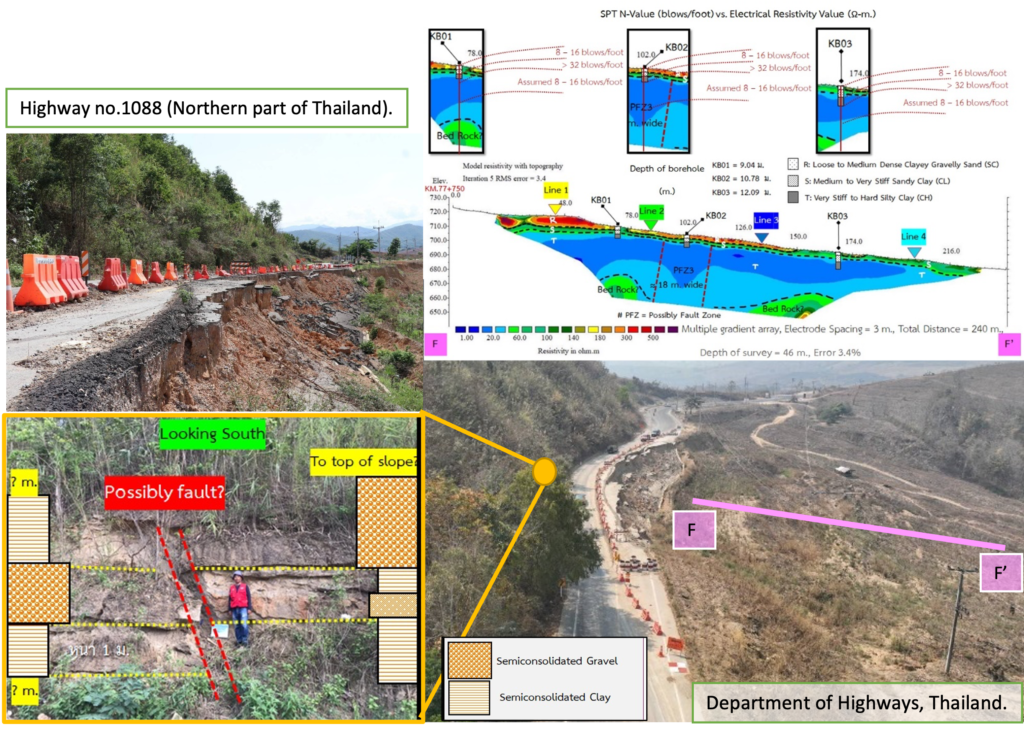
[Natural hazards; Landslides; Numerical Simulation; Countermeasure Techniques; Disaster Prevention and Mitigation]
Innovative Strategies to Improve Landslide and Slope Stability through Optimal Horizontal and Vertical Drainage Design
The objective of this study is to identify the triggers of slope failure and determine the optimal location of drainage systems, including horizontal drains, to counteract them. This will reduce the risk of slope failure, improve slope stability, and develop new strategies to prevent and mitigate landslide damage. The study will investigate the effects of both vertical and horizontal drains and explore optimal strategies for slope protection. This innovative approach is expected to contribute to the provision of safe habitats and the reduction of natural disaster risks.
[Natural Hazards; Geohazards; Numerical Simulation; Countermeasure Technology; Disaster Prevention and Mitigation]
Reproduction of Internal Behavior of Earthquake Liquefaction by MPS-DEM-CAE Coupled Analysis and Feedback to Countermeasure Technology
This study aims to elucidate the internal mechanisms of liquefaction during earthquakes and proposes an innovative methodology based on coupled MPS-DEM analysis and CAE techniques. In particular, this study contributes to the quantitative and visual assessment of sand particle settlement and pore water pressure fluctuations during seismic loading and to the identification of effectiveness and improvement of liquefaction mitigation methods. The liquefaction behavior of sandy soils was reproduced in detail and visualized using seismic waveforms based on data from the 2011 Tohoku earthquake. The analysis revealed important phenomena such as the eruption of sand particles after loading by seismic motion, the accumulation of excess pore water pressure in the soil, and the reduction of effective stress between sand particles. This study lays the foundation for a better understanding of liquefaction and the development of more effective countermeasures.

[Construction Recycling; Generated Soil; Neutralization; CO2 Fixation; SDGs]
Simultaneous Optimization of Alkali Reduction and CO2 Fixation in Fluidized Bed Soils for a Recycling Society
Effective utilization of waste and reduction of CO2 emissions at construction sites are important issues in achieving the Sustainable Development Goals (SDGs). In this study, an attempt is made to develop a process to efficiently immobilize CO2 contained in construction waste soil as carbonate and quantify the amount immobilized by using fluidized treated soil with simulated CO2. In addition, research will be conducted to optimize the reduction of alkalinity by neutralizing the alkalinity of fluidized treated soil using gypsum solidifiers, which will contribute to the sustainable development of the construction industry and provide new methods for reducing CO2 emissions and improving the geo-environment.
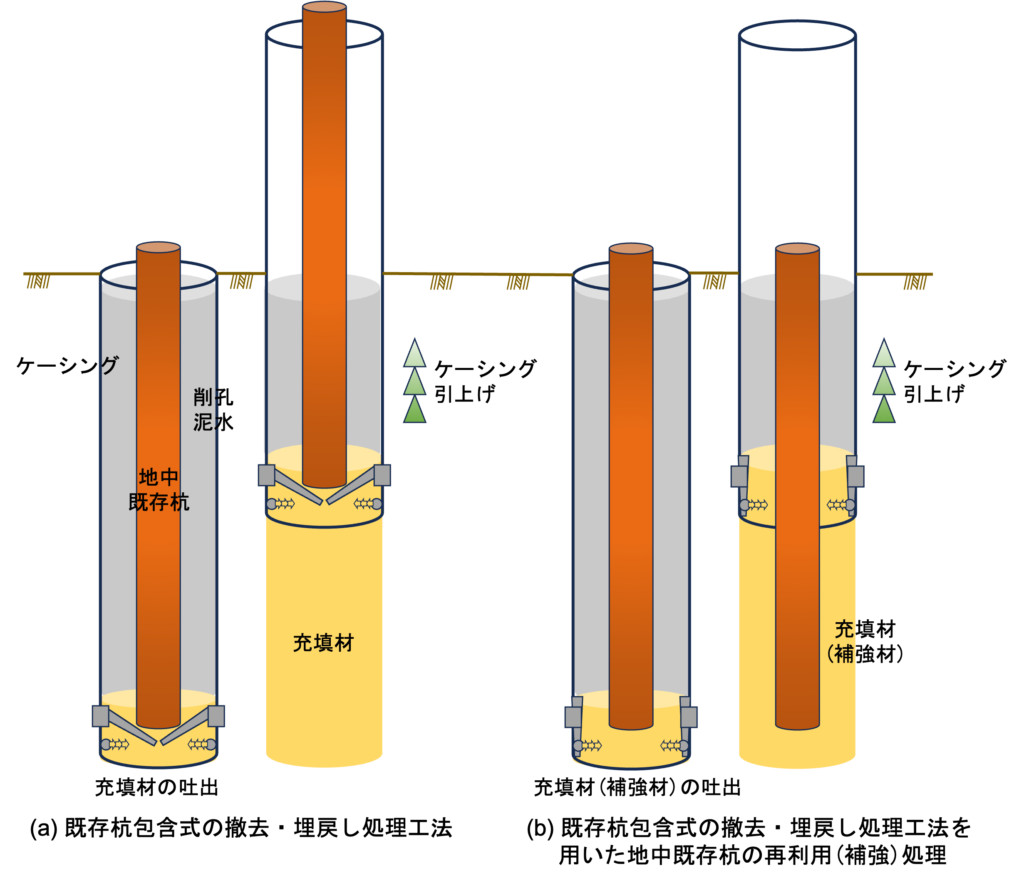
[Construction Recycling; Existing Piles; Numerical Analysis; Reinforcement and Reuse; SDGs]
Sustainable Urban Regeneration through the Development of Technologies for the Strengthening and Reuse of Existing Piles (Contribution to SDGs)
This study addresses issues related to aging social infrastructure and proposes new directions for sustainable urban development through the strengthening and reuse of existing underground piles. Advanced three-dimensional elasto-plastic Finite Element Method (FEM) analysis is used to accurately assess the bearing capacity of undamaged piles, damaged piles, and damaged piles after reinforcement. Initial research results have shown that it is possible to significantly restore the capacity of damaged piles by reinforcing them. This innovative approach helps reduce waste and CO2 emissions, contributing to Goal 11 of the Sustainable Development Goals (SDGs): ‘Make cities and communities livable’.
[Boreholes; Materials and Methods; Numerical Simulation; Environmental Protection; SDGs]
Development of A Compaction Backfilling Method for Ground Boreholes to Recycle Resources and Reduce Environmental Impact
This study proposes an innovative earth-based compaction backfilling technology to meet the challenges faced by the Japanese construction industry in reducing environmental impact and reusing resources. The technology aims to improve the filling of earth excavation holes during the reconstruction process of aging infrastructure facilities. The use of natural earth and sand with low environmental impact instead of conventional materials such as cement slurry and fluidized treated soil promotes resource recycling while minimizing ground displacement. The effectiveness of the technology has been demonstrated through quantitative evaluation using MPS-CAE analysis and three-dimensional elasto-plastic finite element method (FEM) analysis. The technology has been applied in the following areas. This is expected to contribute to the realization of a sustainable society and reduce the amount of soil generated at construction sites.
[Foundations; Construction performance; Numerical simulation; Rationalization; Technical innovation]
Improving the Efficiency and Safety of Foundation Construction Methods for Strengthening Social Infrastructure on Soft Ground
The study focuses on the evolution of infrastructure technology, including the efficiency of in-situ concrete piling, which is essential for construction in soft soils. The use of drilling stabilizing fluids plays an important role in this method. Specifically, the study uses experiments and state-of-the-art multi-phase simulation technology (MPS-CAE) to provide a detailed analysis of the concrete replacement efficiency in the stabilizing solution and its influencing factors. Particular attention is paid to the effect of stabilizer degradation on concrete behavior, as well as slime accumulation and residual stabilizer particles as potential causes of structure failure. The study presents a new approach to improving construction technology and provides important insights into practical applications in the industry.
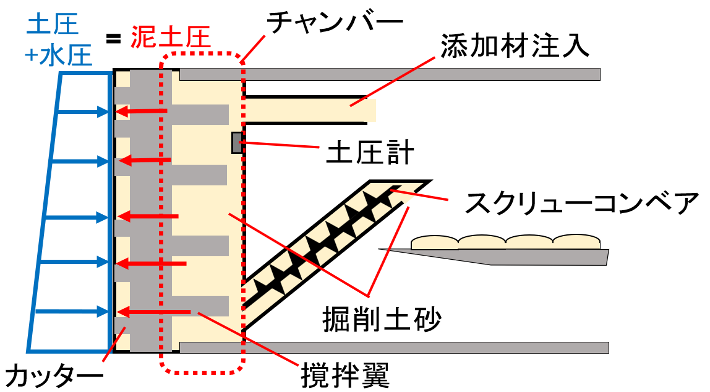
[Tunnels; Construction Performance; Numerical Simulation; Rationalization; Innovation]
Improved Sediment Plasticity Management In Earth Pressure Balance Shield Tunneling for the Construction of Urban Underground Structures
This study aims to improve sediment flow management, focusing on the earth pressure balance shield method, which is essential for the construction of underground structures in urban areas. While conventional methods rely on slump tests and engineers’ experience to evaluate soil flowability, this study attempts to visualize it through model experiments and replicated analyses to clarify the relationship between plastic flowability of mud and soil pressure. In particular, the use of MPS-CAE technology has paved the way for objective, real-time improvements in sediment flow management through efficient and accurate visualization of the plastic flow properties of muddy soil samples. This approach is expected to lead to more accurate sediment flow management at excavation sites and significantly improve the safety and efficiency of underground structure construction.

[Geothermal Energy; Energy Piles; Consolidation Settlement; Numerical Analysis; Natural Energy]
Development of A Geothermal System Using Energy Piles and Evaluation of Its Impact on Soft Cohesive Landforms
The study proposes practical ways to efficiently utilize a renewable natural energy source – geothermal heat. In particular, it focuses on the effectiveness of environmentally friendly air conditioning systems that utilize energy piles as the foundation for structures, and examines the effects of thermal cycling over long periods of time, particularly in soft cohesive soils. Energy piles can be used to dissipate excess heat from building air conditioning systems into the ground and make effective use of geothermal heat. In this study, thermal cycling experiments were conducted for a total of 648 hours at temperatures ranging from 27°C to 40°C. The results confirm that secondary consolidation settlement in soft clay soils is reduced by an average of 611 hours (64.19%) and that an accumulation of irreversible consolidation settlement was observed after thermal cycling ceased. The results of this study were published in the Journal of Geothermal Engineering and Technology. These results provide important guidance for understanding soil behavior and minimizing environmental impacts in the further development of geothermal technologies.

[Power Grid; Soil Resistivity; Experiment; Analysis; Innovation]
Development of A Model for Predicting Soil Resistivity in Power Grid Construction
This research has the potential to revolutionize power grid construction projects in Thailand, particularly by proposing innovative solutions to the challenge of soil resistivity in the selection of reclaimed soils. A thorough understanding of the electrical properties of soils is critical to the design of safe and efficient power grid systems. This study tracks several geotechnical properties of soils, including moisture content, density, and soil particle properties, and how they affect the electrical resistivity of soils. To this end, predictive models of soil resistivity will be developed based on data from laboratory and field tests using statistical and machine learning techniques such as multiple regression analysis, numerical analysis, neural networks, and nonlinear regression modeling. The results of this research are expected to contribute to minimizing risks in the design and construction of transmission grid stations, and to improve community safety and grid reliability in Thailand.
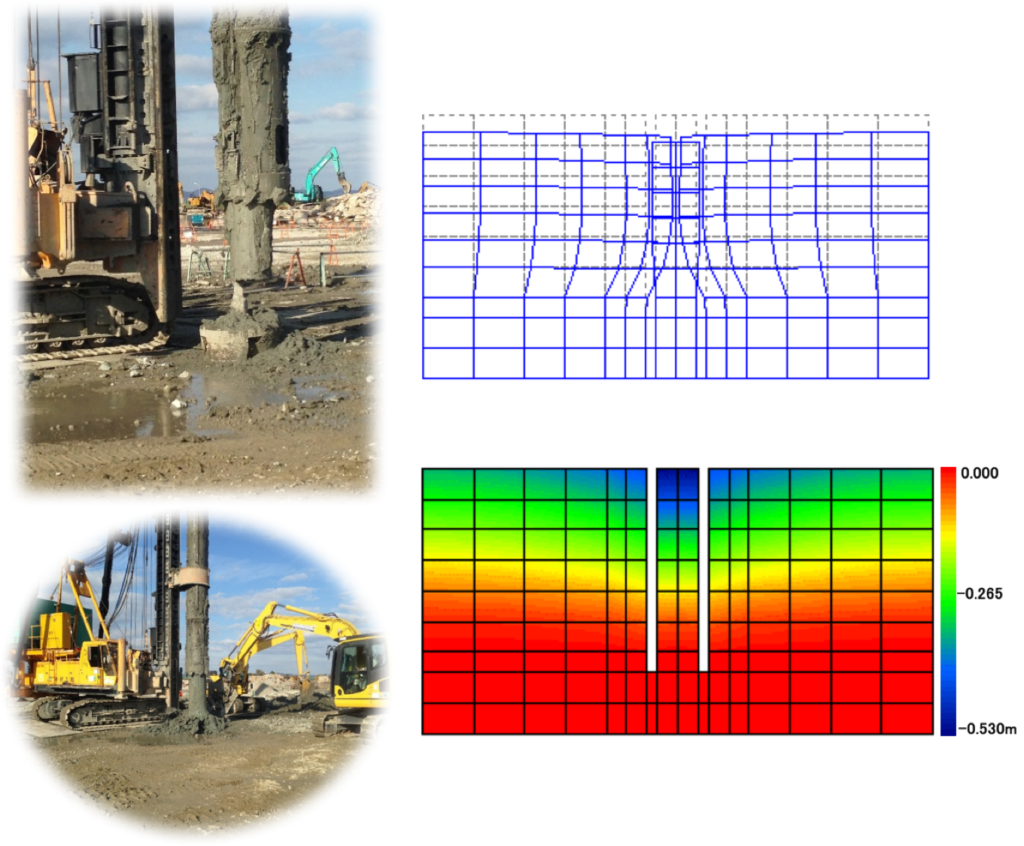
Influence of Pulling-out Existing Piles on the Surrounding Ground
The tear down of infrastructures has been increasing in recent years due these infrastructures have aged and their utilization has decreased along with the decrease in population. The number of pile foundations being pulled out is now far greater than that being newly installed pile foundations.
This study considers the influence of a pull-out hole on the static and dynamic characteristics of the surrounding ground using two-dimensional dynamic finite-element analysis. The special qualities required by fillers injected into such holes are being also clarified.

Evaluation of Ground Improvement by DEM
The technology (method) for ground improvement aimed at securing the stability of the ground achieves the desired geotechnical conditions by artificially improving the soft ground. Although many technologies for ground improvement are proposed at present, there are few methods to confirm whether the designed ground improvement is actually carried out, and a method for evaluating the technology for ground improvement is necessary.
Therefore, a granules analysis based on distinct element method (DEM) for various technologies for ground improvement is being conducted, and being examined the method of more effective ground improvement.

Development of Real-Time Visualization for Ground Improvement
In ground improvements as well as pile constructions, it is important to effectively utilize various information obtained during the construction to ensure their qualities and shape forms.
Therefore, in parallel with the ground improvement and the pile construction, an innovative system that can measure some characteristic of surrounding ground with real time, visualize the measured values in three dimensions and facilitate construction management is being developed.
This system promotes i-Construction being promoted by Ministry of Land, Infrastructure and Transport, and Construction Information Modeling (CIM), contributing to improvement and efficiency of construction production system.

Real-time Checking for Ground Improvement Works
In contrast to the mechanical stirring method in which the ground soil and the modifying material are mixed and stirred by stirring blades and the improved body is formed in the ground, the high pressure injection stirring method is a method in which the improved diameter is changed due to soil condition and so on. There is a possibility that it can be changed with, and a method for easily confirming the shape, particularly the improved diameter, is highly desired.
Therefore, a technology that can make “visualization” of the situation of ground improvement and confirm such as the improved diameter in real time is being proposed and developed.
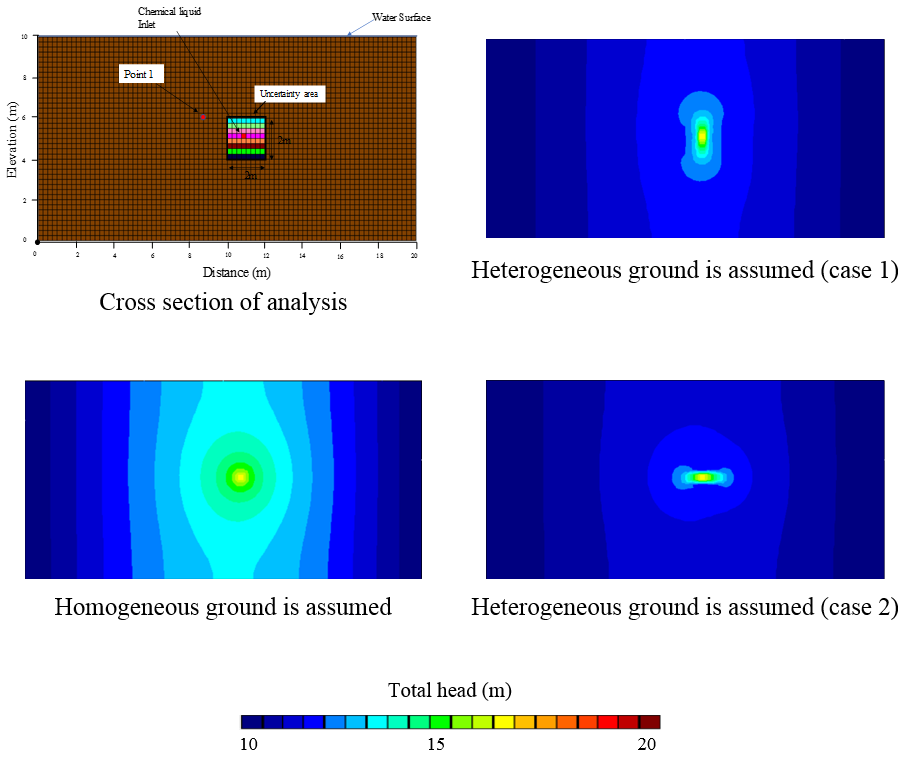
Influence of Ground Uncertainties on Ground Improvement
Chemical grouting is one of ground improvement methods to inject liquid chemicals into the void of soft sandy ground. It is used mainly to prevent liquefaction and increase in strength for the sandy ground. However, due the sandy ground involves uncertainties, it is difficult to determine the penetration range of chemicals. Existing research has analyzed under homogeneous ground conditions, but in fact it is a heterogeneous ground with uncertainty.
Therefore, a seepage flow analysis for chemical solutions against the ground requiring ground improvement in uncertainty ground is being carried out and it is being compared the behavior of chemical solution with homogeneous ground.
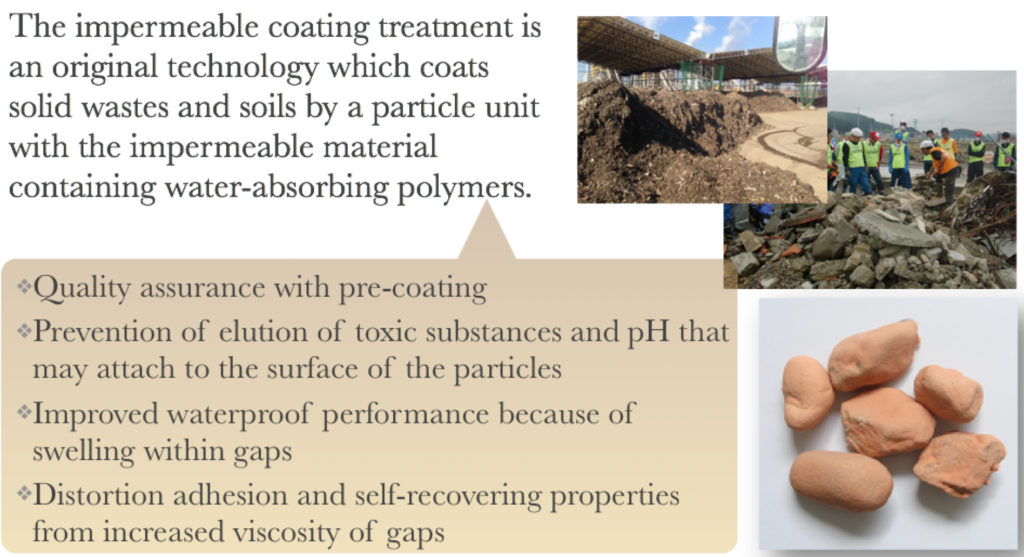
Impermeable Coating on Contaminated Soils and Wastes
The impermeable coating treatment is a technology which coats solid wastes and soils by a particle unit with the impermeable material containing water-absorbing polymers. The elution of attached substances on the surface of soil particles such as heavy metals will be suppressed, because each particle of soils is coated with impermeable materials uniformly.
In order to utilize solid wastes and soils, it has been evaluating the basic properties by laboratory experiments.


Silica-based Solidifying Material Made from Inorganic Solid Wastes
It has been developing a powdery silica-based solidification material that heat treated inorganic solid wastes including much silica ingredient, such as a waste grass and a waste fly ash, mixed with alkali aids.
A solidification mechanism of the mixture with silica-base solidification material, blast furnace slag and water is clarified based on the viewpoints of chemistry and mineralogy.
It has been clarified that the silica-based solidification material has the efficiency of delay by laboratory blended test and field test.
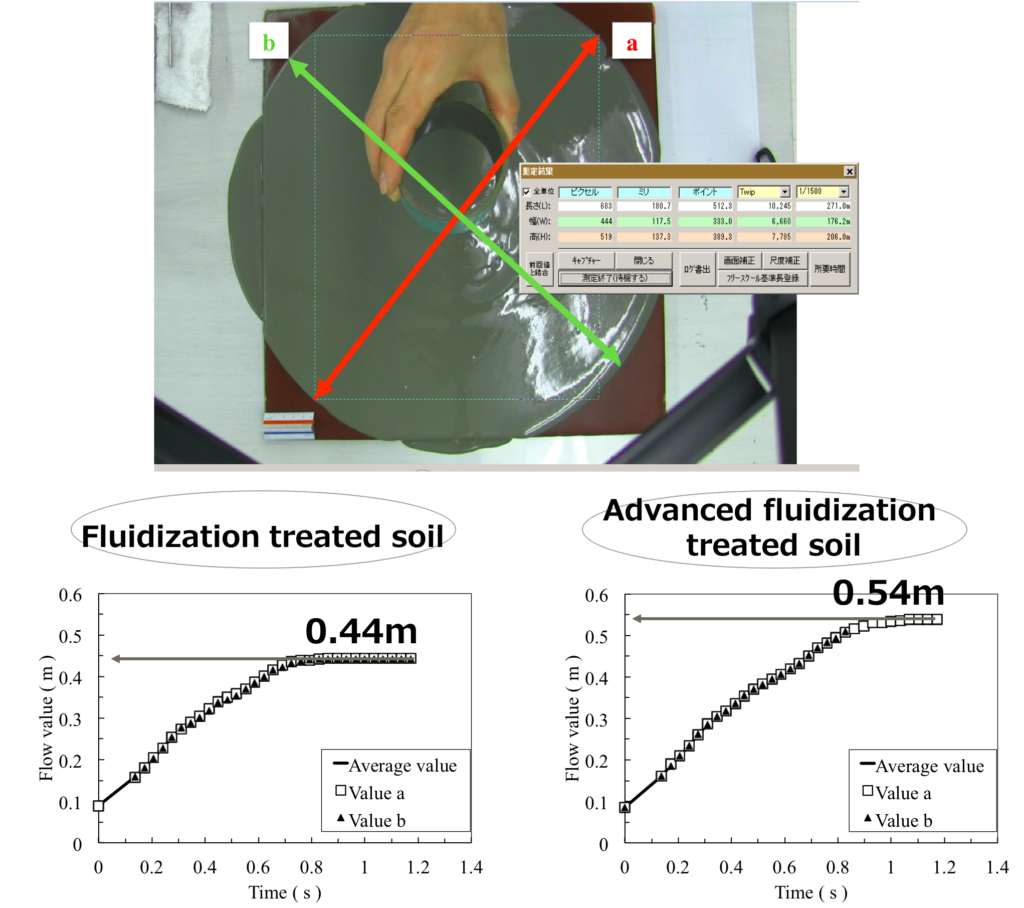
Evaluation of Fluidization Treated Soils Based on MPS Method
Recently, fluidization treated soils have come to be used as landfill materials or fillers in such landfill of underground space in Japan. However, the design and construction of the fluidization treated soils at present is based only on empirical knowledge.
Therefore, it has been evaluating the flow-ability of the fluidization treated soils based on the flow analysis by the MPS method and the experimental evaluation. Favorable results have been obtained in the numerical flow analysis by using the Bingham model to the MPS method.
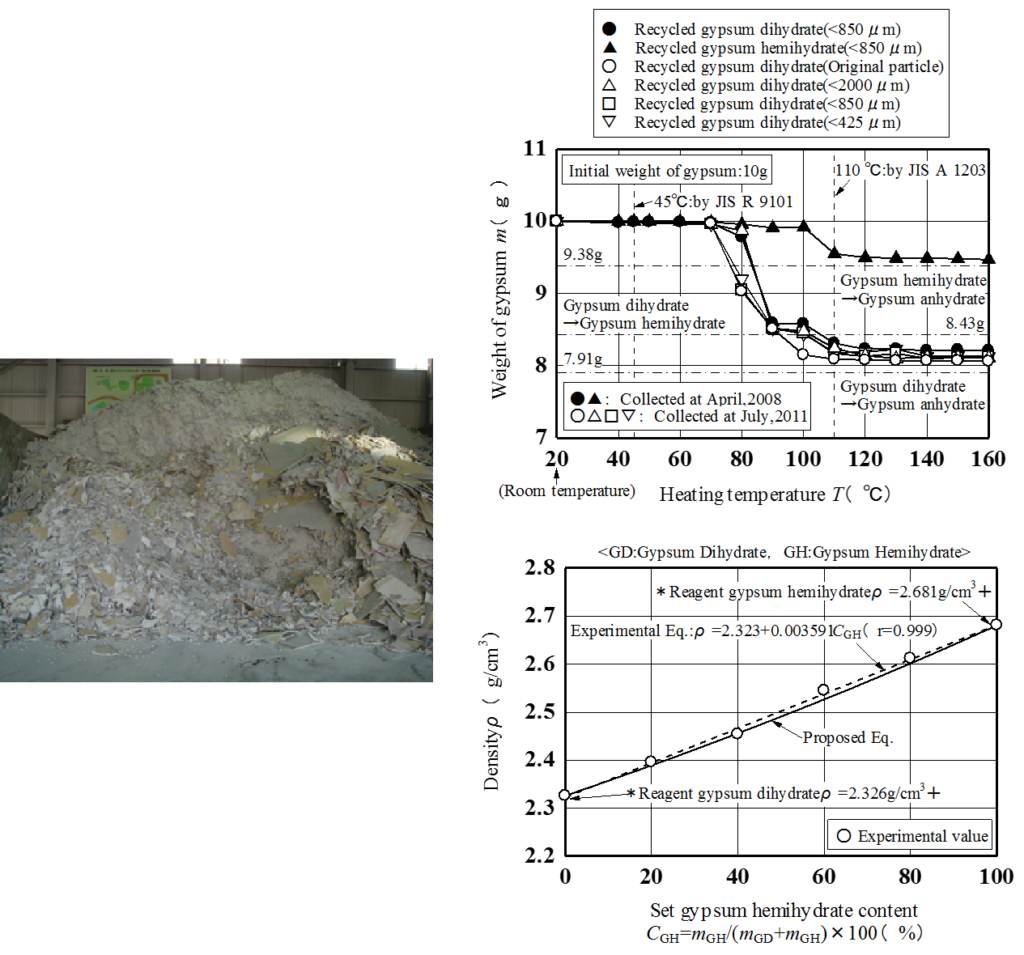
Gypsum Hemihydrate Content in Recycled Gypsum Boards
This study reviews in detail the thermal behavior of recycled and reagent gypsum from the viewpoint of recycled gypsum utilization as geo-material. It has been discussing the methods to determine the content of the gypsum hemihydrate from the viewpoint of density as a simple quality judgment method of the recycled gypsum.
The validity of the estimation method of gypsum hemihydrate content using the density was experimentally confirmed. Moreover, by calculating the gypsum hemihydrate content from the measurement result of the recycled gypsum density, the effectiveness of the quality control method based on the density was proven.
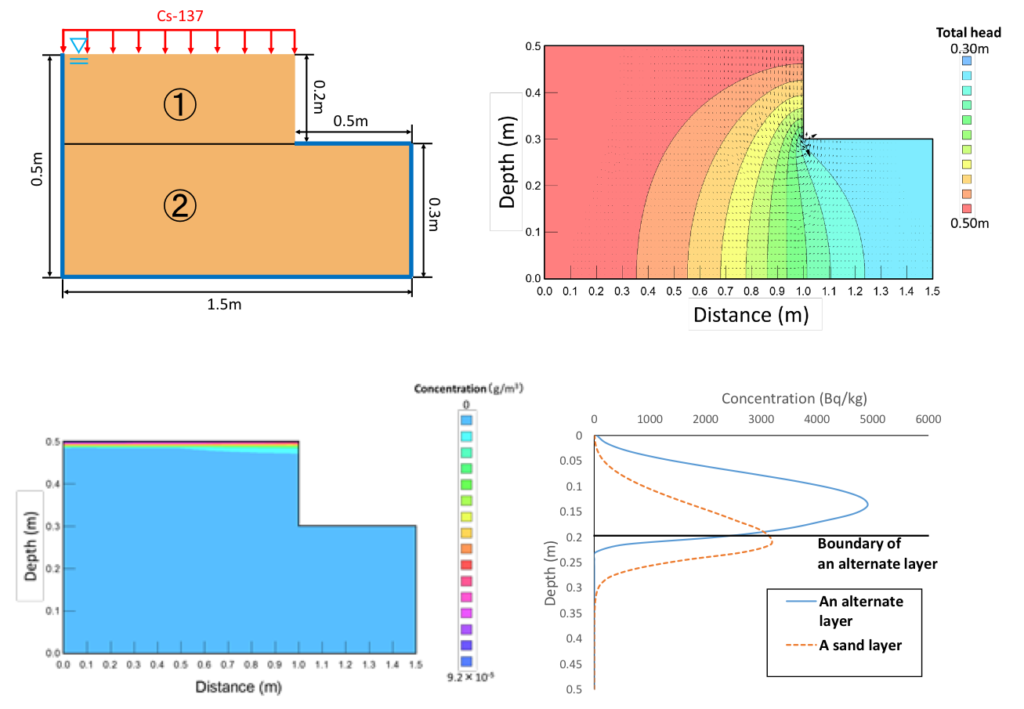
Transportation Behavior of Radioactive Substances in Soils
In 2011, a number of radioactive substances were released as a result of the accident at the Fukushima Daiichi Nuclear Power Plant that was caused by the Tohoku Region Pacific Coast Earthquake. The released radioactive substances fell onto the surrounding ground or into the sea. Therefore, decontamination measures for the ground have been conducted at the field site.
The advection-dispersion equation has been added to the radioactive half-life in order to evaluate transportation of radioactive substances.

Improvement of Insolubilization Materials on Contaminated Soils
In recent years, heavy metal ions, which are harmful substances irrelevant to artificial development, may exist in the soil, soil contamination due to soil and rock containing naturally derived heavy metals has become apparent.
Therefore, focusing on improvement of insolubilization treatment which is one of contaminated soil treatment methods, it has been developing new insolubilization materials. Specifically, it is conducting the tests on the insolubilization effect on heavy metals and elucidates insolubilization mechanism chemically and mineralogically as well as insolubilization effect on heavy metals.

Evaluation of Containment Performance on Coastal Landfill Sites
The containment performance of impervious structures is considered the most important performance, which the toxic substances are enclosed in coastal landfill sites. The containment performance is evaluated generally by the hydraulic conductivity and the thickness of impervious structures to focus on an advection. However, the leakage of toxic substances is affected by a diffusion and a dispersion.
The containment performance is evaluated from the viewpoint of the diffusion and the dispersion in this research. Concretely, the influence which the toxic substances leaks from impervious structures on the diffusion and the dispersion is evaluated by the infiltration and advection-dispersion analysis on steel-made side impervious walls.

Water Cut-off and Remediation Promotion Technologies at Waste Landfill Sites
It has been proposing the construction of steel pipe sheet pile (SPSP) cutoff walls for promoting remediation of water-soluble toxic substances and containment of water-soluble toxic substances at landfill sites in order to maintain and ensure the environmental safety of waste landfill sites over time.
It has been investigating environmental safety at coastal waste landfill sites by applying water cut-off and remediation promotion techniques to the joint sections of SPSP water cut-off walls that provide shore protection for waste landfills.
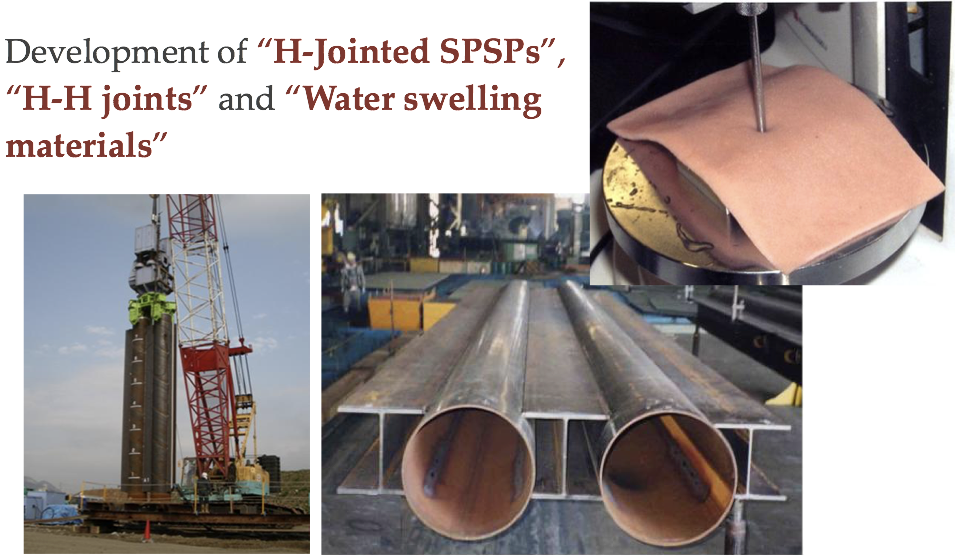
Development of H-joint Steel Pipe Sheet Piles in Construction of Foundations
It has been developing a new H-joint SPSPs technology from a simple idea in which two steel pipes are connected by H-steel section welded on them in order to improve the performance and widen application areas of SPSP technology.
It shows development and application potential of newly developed H-joint steel pipe sheet piles (SPSPs) in SPSP structures.The H-joint SPSP is expected to remediate problems of traditional joints in SPSPs.
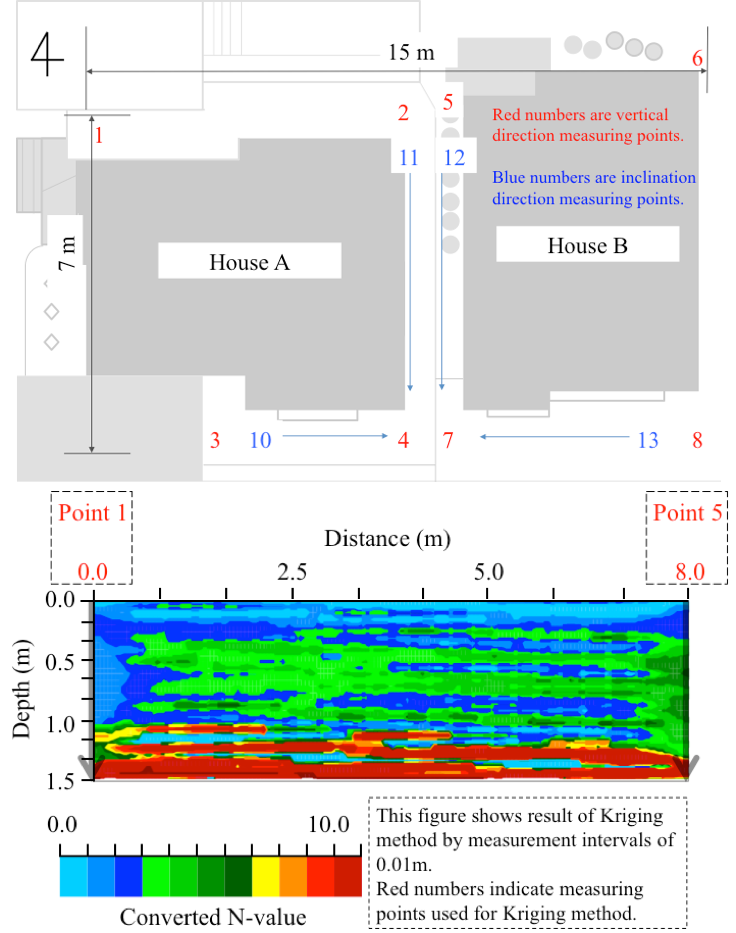
Applicability of Geostatistical Methods to Ground Investigation
It has been predicting the cross-sectional distribution of the ground characteristics at unknown points and areas, where the converted N-values in the relevant ground are not clarified, using geostatistical methodology. In particular, it uses relevant-ground converted N-value data obtained through the improved type Swedish sounding test (Nippon Screw Weight System; hereinafter, referred to as the NSWS test) for the filling ground of certain detached houses, where ground subsidence was actually generated.
Thus, it has been validating the geostatistical method for the prediction of the cross-sectional distribution of ground characteristics, including physical properties, at narrow detached-house grounds.

Life Cycle Assessment on Recycling of Construction Sludges
It has been examined the evaluation method for social environmental efficiency to socially evaluate waste recycling, by incorporating environmental load as an environmental cost in addition to the direct cost.
The social environmental efficiency evaluation including consideration of uncertainties is conducted, because waste recycling involves various uncertain elements.
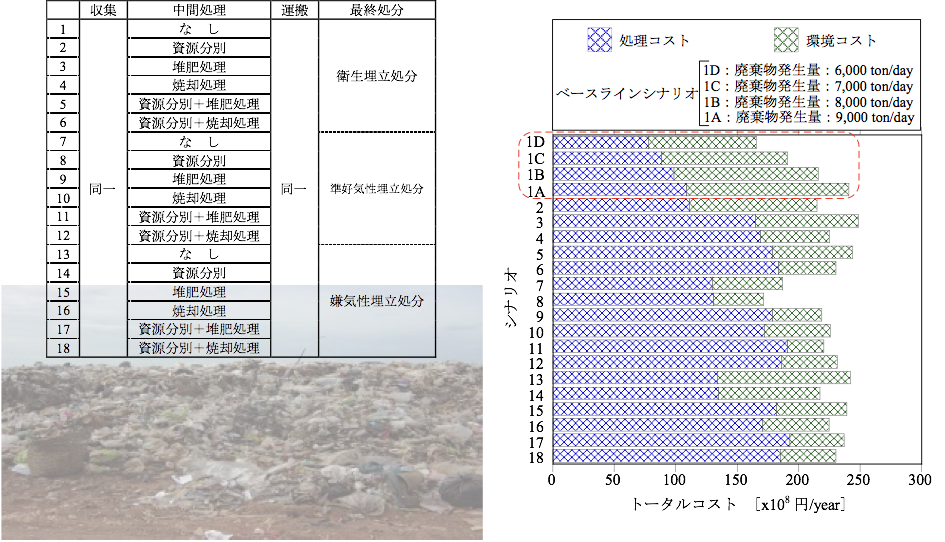
Necessity of Broad-based Disposal for Disaster Wastes
It quantified the environmental impact with respect to the tsunami debris generated by the Great East Japan Earthquake and further, by incorporating a time scale, we discussed the appropriate disposal flow from both environmental economics and time axis viewpoints.
It has been shown that the promotion of broad-based disposal and reuse of waste is important from the comprehensive aspect of environmental impact and time.

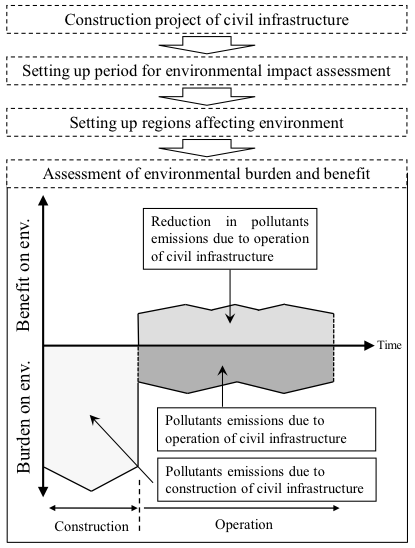
Environmental Accounting on Civil Infrastructures
It has been proposing the environmental burden and benefit assessment method, which contributes to the evaluation of public works, by considering a quantitative environmental impact.
The method developed is applied for the Bangkok subway construction project, so that the environmental impact following the Bangkok subway construction work is evaluated on the basis of environmental accounting.
